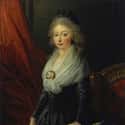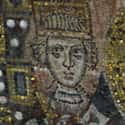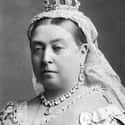-
(#16) Francis I of France
- Notable Figure
At a peaceful summit between England and France known as the Field of the Cloth of Gold, King Francis I (1494-1547 AD) and King Henry VIII (1491-1547) were supposed to be getting along and fight only "as brothers-in-arms." Henry, however, couldn't resist showing off.
As scholar Karen Watts explains, "On one such day there was wrestling and archery. Henry had great success with the bow, while Francis took little or no part in the archery. Afterwards, Henry, rather surprisingly, challenged Francis himself to a wrestling match, but he was quickly thrown by the French king and suffered a subsequent loss of face."
That was in 1520. In the ensuing years, English and French forces would go head to head in several military conflicts.
-
(#11) In 1830, Marie Thérèse Was Queen of France For About 20 Minutes
Royal successions can be immensely complicated, even during relatively peaceful eras. But during the French Revolution? Forget about it.
Marie-Thérèse Charlotte (1778-1851 AD) was the oldest child of Louis XVI and Marie-Antoinette. Her parents were executed during the French Revolution, which gave way to the First Republic in 1792, which was then overthrown by Napoleon Bonaparte in 1799, who was exiled in 1814 - and then again in 1815.
Marie's uncle became Louis XVIII during the Bourbon Restoration, which started in 1814, but was interrupted for 100 days when Napoleon returned. After the emperor was exiled a second time, the Bourbons were reestablished in 1815. In 1824, Louis was succeeded by Charles X, Marie's father-in-law. Charles abdicated in 1830, which technically made his son, Louis Antoine, the new King of France - and Marie the queen - but Louis also was forced to abdicate in favor of his nephew. Thus, Louis and Marie were the French monarchy for all of 20 minutes.
-
(#4) Justinian II Replaced His Mutilated Nose With A Gold One To Regain The Throne
According to Byzantine tradition, emperors had to be free of physical imperfections. This was why Leontios cut off the nose of Emperor Justinian II (c. 668-711 AD) when he usurped the throne in 695 AD. Leontios then exiled Justinian from the kingdom and had his supporters burned alive.
Justinian II was not a particularly popular emperor, but Leontios didn't fare much better. He himself was usurped in three years - and had his nose cut off as well. Justinian regained the throne in 705, this time wearing a golden nose prosthetic.
Unfortunately, the new nose did nothing to improve Justinian's personality or style of leadership. He was removed again from the throne - and this time executed - in 711 AD.
-
(#8) Queen Victoria
- Notable Figure
There's a reason Queen Victoria (1819-1901) is known as the "Grandmother of Europe." Her nine children were wed to various European royals, as were many of her 42 grandchildren. To this day, the monarchs of a handful of countries are counted among her descendants.
Victoria's last surviving grandchild was Princess Alice, the Countess of Athlone and the great-aunt of Queen Elizabeth II. Alice lived to the age of 97 and passed in her sleep in 1981.
-
(#15) Cleopatra
- Notable Figure
Though often depicted in media as a scheming seductress, Cleopatra VII (69-10 or 12 BC) was an ambitious, intelligent ruler who went toe to toe with the most powerful empire in her era.
The queen spoke numerous languages, and was the first of Egypt's Greek rulers to actually learn Egyptian. She is even believed to have written books on herbs and cosmetology, though these are lost to history.
-
(#14) The Romanovs' Remains Were Found In 1979, But Politics Prevented Them From Being Revealed Until Years Later
Following the Communist revolution in Russia, the Romanov family was executed in July 1918. However, what became of their remains was kept secret for decades.
Geologist Alexander Avdonin began following rumors of the Romanovs' final resting place in 1970. Working with the son of a member of the Bolshevik secret police, he exhumed the bodies in 1979 near a mansion in Yekaterinburg, Russia - where the family had been imprisoned.
The Soviet Union's distaste for the Romanovs led the two to rebury the bones and wait until more time had passed. The approached the government in 1988, and the official investigation was finally carried out in '91, after the Soviet Union had collapsed.
New Random Displays Display All By Ranking
About This Tool
Our data comes from Ranker, If you want to participate in the ranking of items displayed on this page, please click here.















